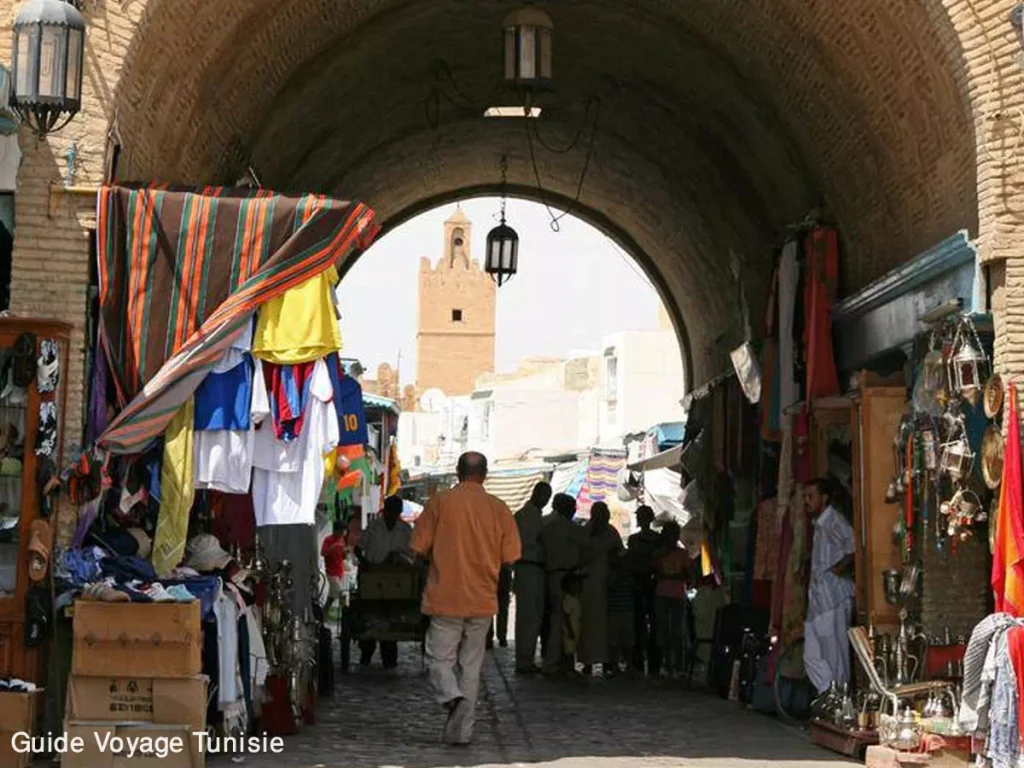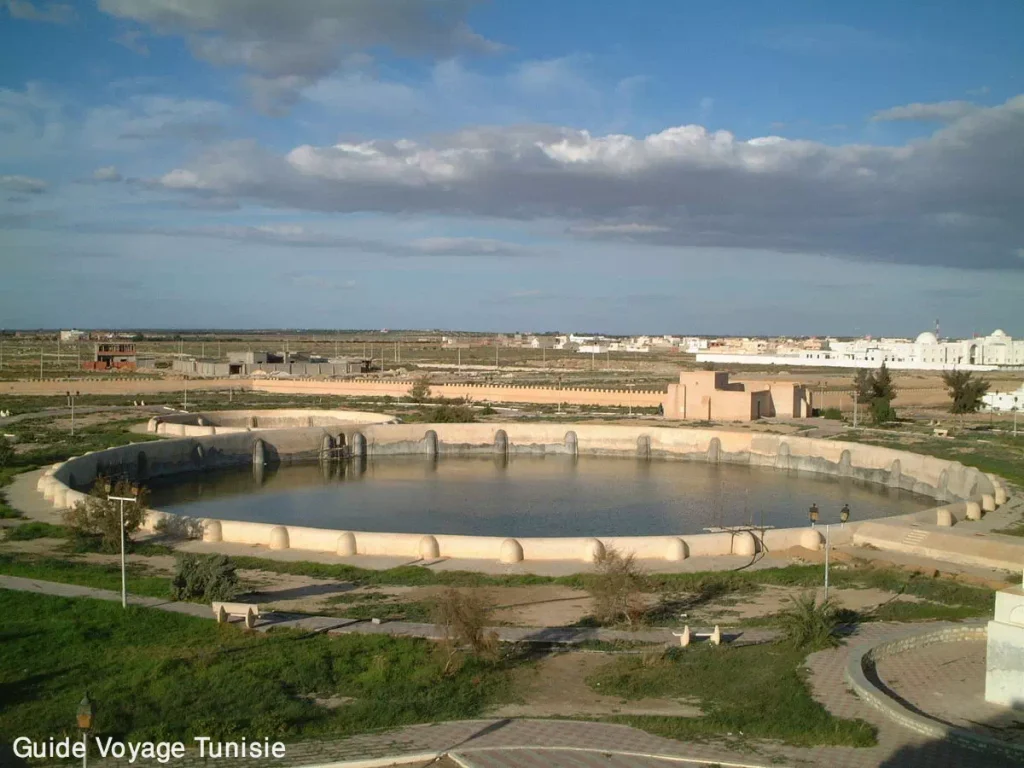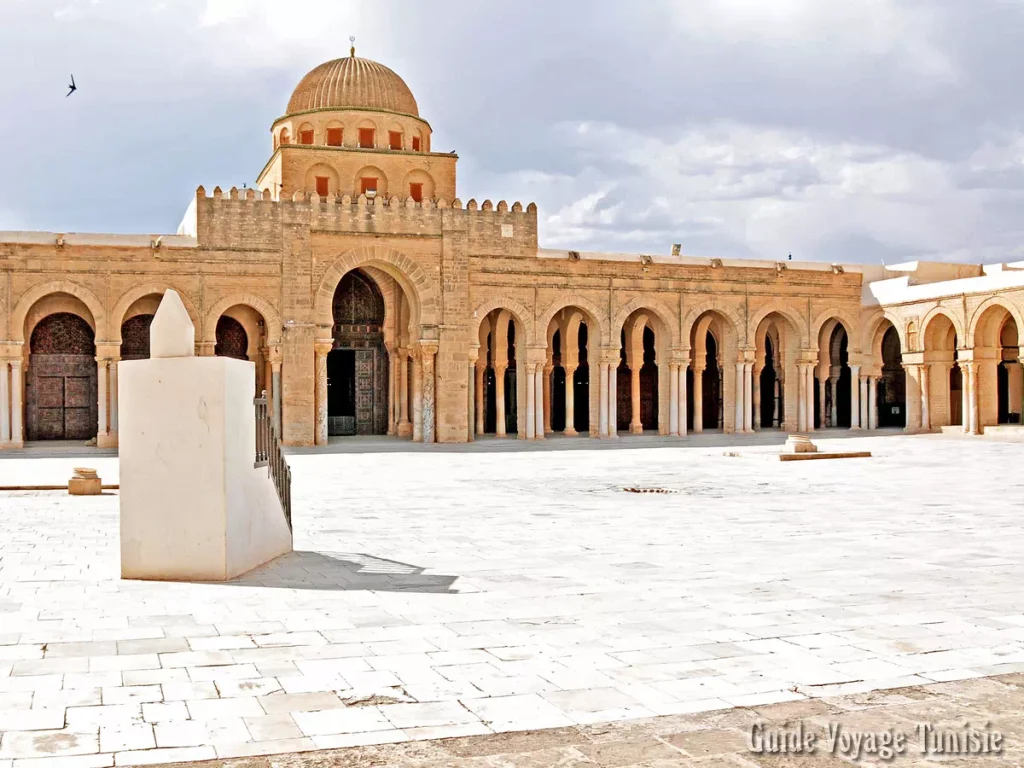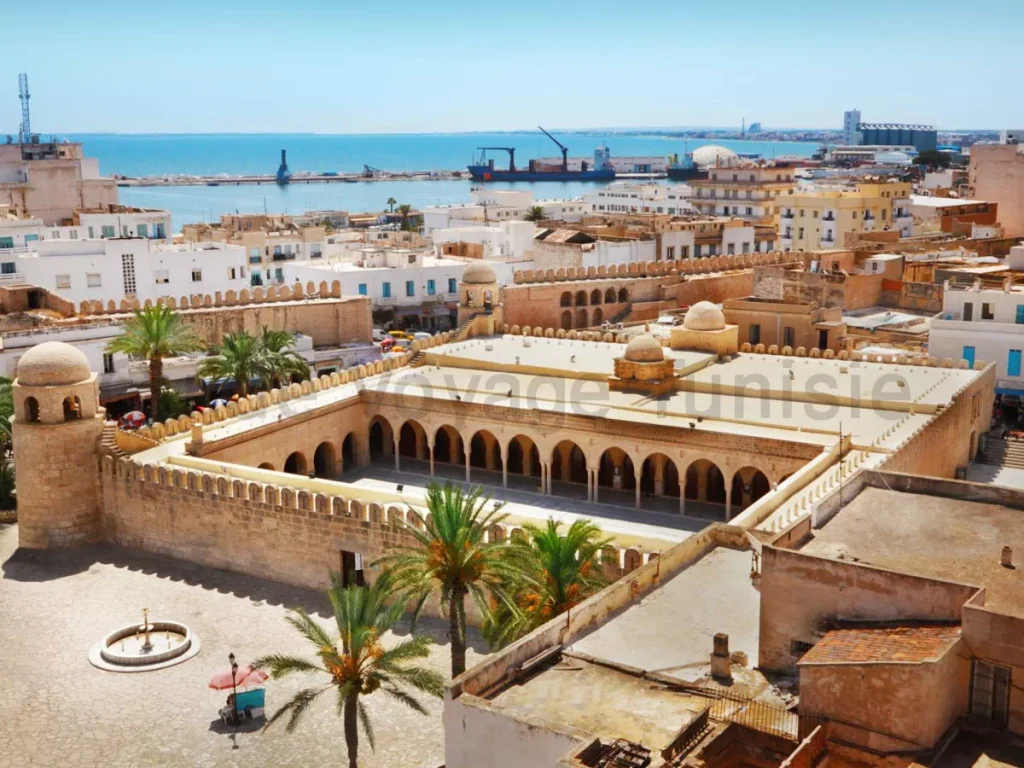The city of Kairouan
The city of Kairouan is a city in central Tunisia and the capital of the governorate of the same name. It is located 150 kilometers southwest of Tunis and fifty kilometers west of Sousse. With a population of 139,070 in 2014, it is often referred to as the fourth holiest (or sacred) city in Islam and the first holy city in the Maghreb.
The first Arab city in North Africa, Kairouan was an important Islamic center in Muslim North Africa, Ifriqiya, until the 11th century. With its medina and its markets organized by Oriental-style corporations, its mosques and other religious buildings, the city has been on the Unesco World Heritage List since 1988. In 2009, it was proclaimed the capital of Islamic culture by the Islamic Organization for Education, Science and Culture.
The city of Kairouan is also famous for its handmade wool carpets and pastries including makroud
Founded in 670, Kairouan flourished under the Aghlabid dynasty in the 9th century. Despite the transfer of the political capital to Tunis in the 12th century, Kairouan remained the first holy city of the Maghreb. Its rich architectural heritage includes the Great Mosque, with its marble and porphyry columns, and the Three Doors Mosque, which dates from the 9th century.
Located in the center of Tunisia on a plain almost equal distance from the sea and the mountains, the city of Kairouan is the oldest Arab-Muslim base in the Maghreb (670 AD) and one of its main holy cities. Capital of Ifriqiya for five centuries, it was an exceptional place of diffusion of the Arab-Muslim civilization.
The city of Kairouan is a unique testimony to the first centuries of this civilization and its architectural and urban development. The inscribed site is a serial property which includes the medina and its suburbs, the Bassins des Aghlabids and the Zawiya of Sidi Sahbi.
The medina (54 ha) and its suburbs (20 ha) is an urban ensemble that presents all the components of an Arab-Muslim city. The medina is made up of juxtaposed dwellings divided into districts separated by narrow and winding streets; it is surrounded by ramparts which extend over more than three kilometres. The layout of the suburbs is straighter and the houses there have a more rural character. The medina is endowed with some remarkable monuments including the Great Mosque, an architectural masterpiece which served as a model for several mosques in the Maghreb, and the Mosque of the Three Doors, which presents the oldest carved facade of Muslim art. that has come down to us.
The Aghlabid Basins, an open-air reservoir formed by two cisterns communicating with each other and which dates back to the 9th century, constitute one of the most beautiful hydraulic systems designed to supply the city with water. The Zawiya of Sidi Sahbi houses the remains of a companion of the Prophet Muhammad, Abou Zama El-Balawi.
The historic ensemble of Kairouan, with its central part and its suburbs, has preserved, without alteration, its urban fabric with its morphology, and its architectural and architectonic components. All of these elements convey the universal value of the property and contribute to its integrity.
In addition to the 36 monuments benefiting from a specific classification as historical monuments, the historical complex of Kairouan is protected by Law 35-1994 relating to the protection of the archaeological and historical heritage and traditional arts, by the Decree of October 18 1921 relating to the protection of the souks and picturesque districts of the city of Kairouan and by the urban development plan of the city.
To ensure the safeguarding and proper management of the historic complex of Kairouan, the National Heritage Institute has provided it with a management unit. It was also proposed to create a safeguarded sector, a measure which will be followed by the development of a safeguarding and enhancement plan. The delimitation of an adequate buffer zone to ensure the protection of the three components of the property inscribed on the World Heritage List is desirable, as well as the strengthening of control measures to control and reduce illegal constructions. It is necessary to continue to encourage the use of traditional materials and techniques for the restoration and repair of monuments and houses.
The city of Kairouan in pictures

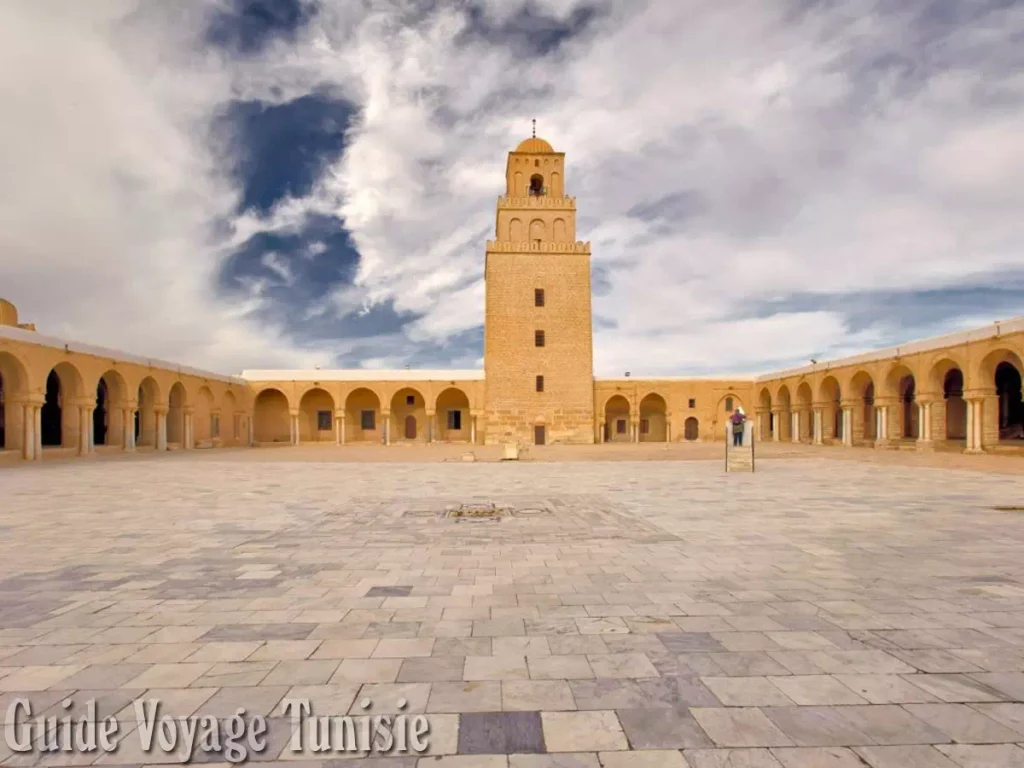
The city of Kairouan in video
Top visits in Kairouan
Kairouan is the place where you won’t get bored! Between its various mausoleums, its old medina and its mosques, we have enough to fill a week. Discover with us the essentials of Kairouan.
Where to stay in Kairouan
In Kairouan, the choice of accommodation is so vast that it can meet all needs and all tastes! Between hotels, guest houses and vacation rentals you are spoiled for choice.
